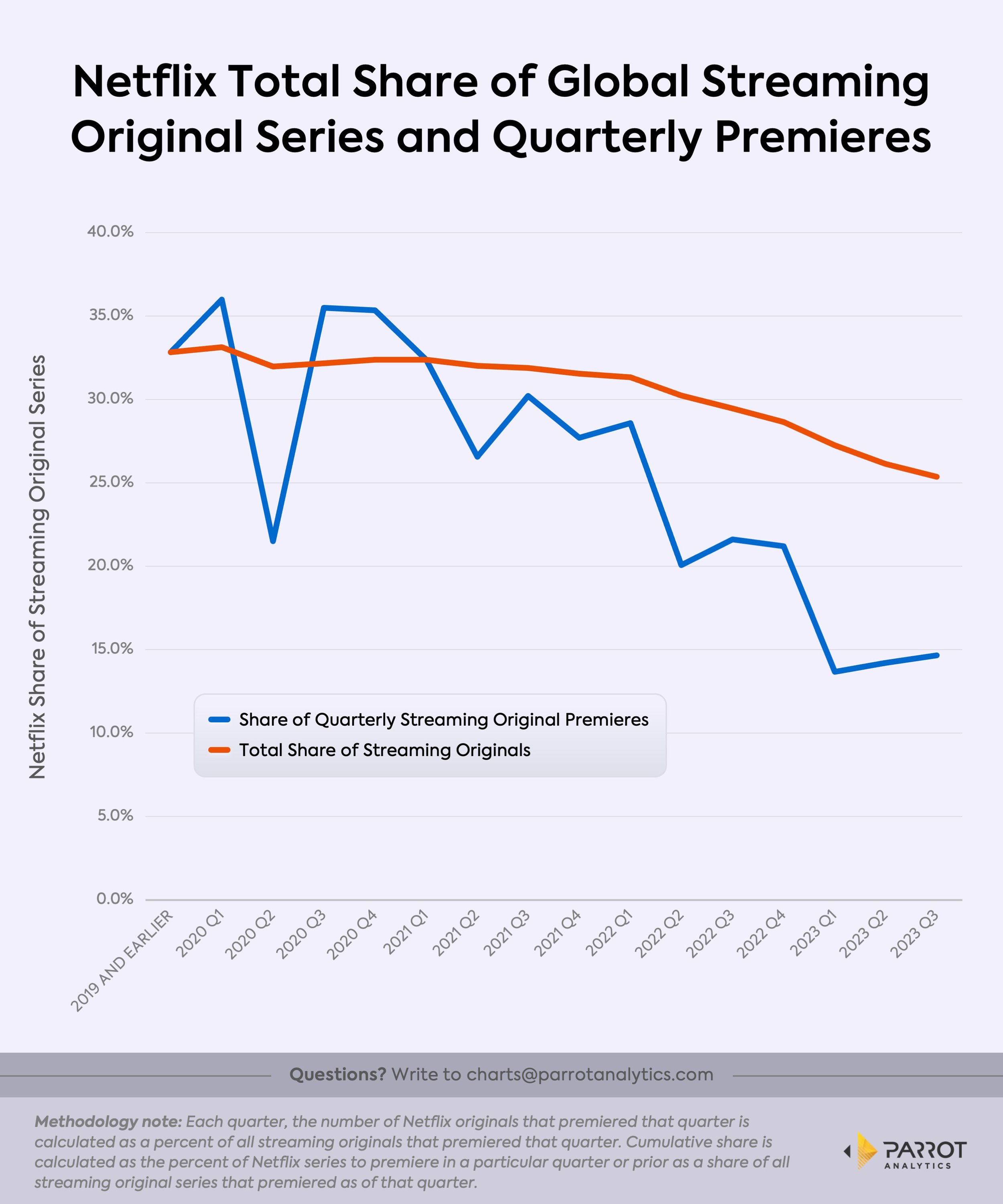Netflix's Declining Supply Share Is A Sign Of Streaming's Changing Dynamics
Despite what some misguided headlines might have you think, the so-called streaming wars are not a winner take all battle royale with Netflix destined to emerge as the sole victor. Instead, the direct-to-consumer competition is more akin to a war of attrition.
Yes, Netflix is the market leader and the only consistently profitable major streamer. But the company is not immune to the general pullback in spending and production hitting the entire industry.
Netflix’s supply share of global streaming original titles has steadily ticked down since 2020, as new competitors entered the field, falling from 33.1% in Q1 2020 to 25.3% in Q3 2023. Looking at the supply share of new premieres during each quarter, the impact of Netflix’s increased competition is even more stark.
As recently as Q3 2021, Netflix accounted for 30.2% of all new streaming original titles released globally. Fast forward two years and Netflix’s share of new streaming originals worldwide is down to 14.7%. Each quarter in 2023 has seen Netflix’s supply share of new streaming original premieres drop below 15%.
As overall volume of content continues to decline, hit rate becomes even more important to sustained success. As we’ve previously covered, Netflix currently has one of the most top heavy streaming libraries, meaning a smaller concentration of movies and TV series contributes to the majority of overall audience demand compared to its primary rivals.
Netflix’s share of global demand for original series continues to hit new lows as well, sitting at 33.3% in Q3 2023, a full 20 percentage point drop from three years ago, 53.5% in Q3 2020 (though still leading the industry by a wide margin). However, given that Netflix’s global share of the supply of streaming originals is down to 25.3% this past quarter, the 33.3% demand share should be considered an over-performance.
What does this mean in practical terms? Netflix is still delivering strong value to their subscribers especially when it comes to streaming originals — a key leading indicator of subscriber growth. Yet the increased competition and challenged marketplace dynamics puts more pressure on the company’s diversification efforts — video games, ad-tier, live events, etc. — to keep it atop the mountain.


